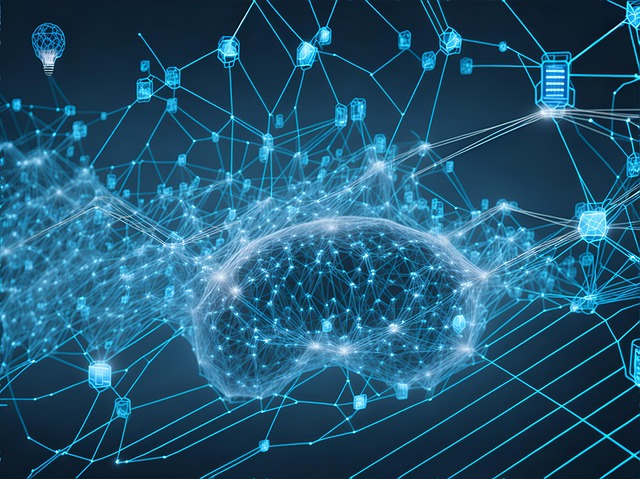AI seafood freshness monitoring systems revolutionize the industry by enhancing sustainability and quality control through predictive analytics, real-time data tracking, and precise inventory management. These technologies minimize waste, boost food safety, promote responsible fishing practices, and empower consumers to make eco-conscious choices in seafood restaurants.
In today’s digital era, the hospitality industry is embracing AI for sustainable sourcing, revolutionizing the way we think about seafood. This article explores how AI seafood sourcing analytics and innovative AI seafood freshness monitoring systems are transforming sustainability practices. From ensuring product quality and safety to optimizing supply chain efficiency, these technologies offer a promising path forward for the industry. Discover how these advancements contribute to a greener, more responsible future in food service.
- AI Seafood Sourcing: Revolutionizing Sustainability
- Freshness Monitoring: Ensuring Quality and Safety
- Data Analytics: Optimizing Supply Chain Efficiency
AI Seafood Sourcing: Revolutionizing Sustainability

AI is revolutionizing the way seafood restaurants source their ingredients, bringing a new level of sustainability and quality control to the industry with its advanced seafood freshness monitoring systems. These innovative technologies employ computer vision, machine learning, and sensor data to track and analyze seafood from capture or farming to delivery. By continuously monitoring conditions like temperature, humidity, and time, AI algorithms predict and identify potential spoilage or contamination, ensuring only the freshest products reach diners’ plates.
This predictive analytics approach not only enhances food safety but also reduces waste significantly. Restaurants can optimize their inventory management by accurately forecasting demand and tracking seafood’s shelf life, minimizing over-ordering and associated costs. Moreover, AI seafood sourcing promotes sustainable fishing practices by enabling traceable supply chains, rewarding responsible fisheries, and empowering consumers to make informed choices about the environmental impact of their meals.
Freshness Monitoring: Ensuring Quality and Safety

AI seafood freshness monitoring systems play a pivotal role in ensuring quality and safety within sustainable sourcing practices. By leveraging advanced algorithms and sensors, these innovative technologies can track vital signs like temperature, humidity, and oxygen levels in real-time. This data enables restaurateurs to maintain optimal conditions throughout the supply chain, from ocean harvests to storage facilities.
Such systems not only preserve the taste and texture of seafood but also minimize the risk of foodborne illnesses. Through predictive analytics, they can anticipate potential spoilage points and proactively adjust transportation and storage protocols. This proactive approach aligns perfectly with sustainable sourcing goals by minimizing waste and maximizing the nutritional value of each catch.
Data Analytics: Optimizing Supply Chain Efficiency

Seafood restaurants are increasingly turning to data analytics, powered by AI seafood freshness monitoring systems, to optimize their supply chain efficiency and sustainability. These advanced technologies enable them to track fish from source to plate, ensuring top quality and minimizing waste. By analyzing real-time data on temperature, humidity, and other factors, these systems predict the optimal time for harvesting, transportation, and delivery, maintaining the freshness and nutritional value of seafood.
Moreover, AI analytics can identify patterns in supply and demand, allowing restaurants to streamline their inventory management. This reduces costs associated with overstocking or stockouts and contributes to a more sustainable sourcing practice by encouraging responsible fishing habits and reducing the carbon footprint linked to inefficient transportation and storage.
AI seafood sourcing and analytics are transforming the industry, ensuring a sustainable future by optimizing supply chain efficiency. Through advanced freshness monitoring systems, these technologies guarantee high-quality, safe products while minimizing waste. By leveraging data analytics, restaurants can make informed decisions, supporting ethical sourcing practices and enhancing their environmental impact. Embracing AI in seafood supply chains is not just a trend but a necessary step towards a greener, more responsible culinary world.
